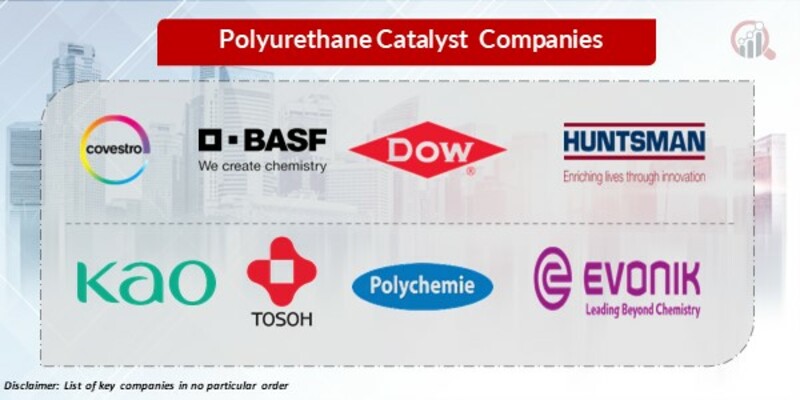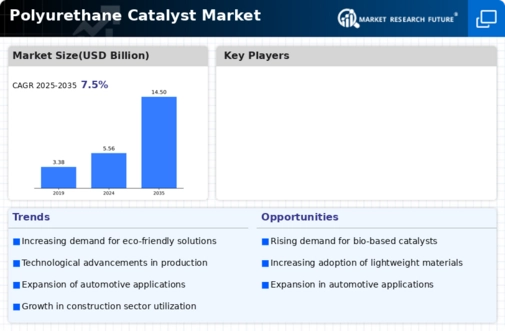Top Industry Leaders in the Polyurethane Catalyst Market

The global polyurethane catalyst market, competition is fierce, with both established giants and innovative newcomers vying for market share. To navigate this terrain, understanding the strategies, key players, and recent developments is crucial.
Strategies for Market Share Dominance:
-
Product Diversification: Leading players like BASF, Evonik, and Huntsman are constantly innovating, developing new catalyst formulations for specific applications. This caters to evolving customer needs and opens up new market segments. -
Vertical Integration: Companies like Momentive and Dow are vertically integrating, acquiring raw material suppliers and expanding their production capacity. This secures supply chains and bolsters cost competitiveness. -
Regional Expansion: With the rise of emerging economies, players are focusing on expanding their footprint in Asia-Pacific and Latin America. Market research and strategic partnerships are crucial for success in these regions. -
Sustainability Initiatives: With environmental concerns gaining traction, companies are developing bio-based and eco-friendly catalysts. This resonates with customers and opens doors to green procurement policies. -
Digitalization and Automation: Implementing AI-powered process optimization and automation is streamlining production, improving efficiency, and reducing costs. This gives early adopters a significant edge.
Factors Influencing Market Share:
-
Type of Catalyst: The market is segmented by catalyst type, with amine-based catalysts dominating due to their versatility and affordability. However, demand for specialty catalysts like isocyanate and polyol-based options is growing. -
Application: The construction industry remains the largest consumer of polyurethane catalysts, followed by the automotive and furniture sectors. However, the growing adoption of polyurethane in electronics, medical devices, and footwear is creating new opportunities. -
Regional Dynamics: Asia-Pacific is the fastest-growing market, driven by urbanization and infrastructure development. Europe and North America are mature markets but still offer opportunities in niche applications and technological advancements. -
Regulatory Landscape: Stringent environmental regulations, especially in Europe, are pushing the development of low-VOC and non-toxic catalysts. This is reshaping the competitive landscape and favoring companies with compliant offerings.
Key Players:
- Covestro AG (Germany)
- BASF SE (Germany)
- The Dow Chemical Company (U.S.)
- Huntsman International LLC (U.S.)
- Kao Corporation (Japan)
- Tosoh Corporation (Japan)
- Polychemie Asia Pacific Permai (Indonesia)
- Suzhou Xiangyuan Special Fine Chemical Co., Ltd (China)
- Evonik Industries AG (Germany)
- Gulbrasnson Chemical Pvt. Ltd. (India).
Recent Developments:
August 2023: Tokyo Chemical Industry Co., Ltd. announces plans to invest in a new production facility for polyether polyol catalysts in Thailand, catering to the growing demand in Southeast Asia.
September 2023: The European Union proposes stricter regulations on VOC emissions from polyurethane adhesives, prompting manufacturers to develop low-VOC catalyst alternatives.
October 2023: A research consortium led by BASF publishes a breakthrough in the development of self-healing polyurethane materials, potentially revolutionizing the market.
November 2023: PatchChem, a leading manufacturer in the Middle East, launches a new line of waterborne polyurethane catalysts for coatings applications.

